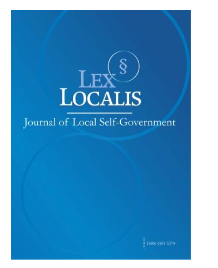EXPLORING AND RANKING CHALLENGES TO PASSENGER DRONE INTEGRATION IN INDIA'S AVIATION SECTOR
DOI:
https://doi.org/10.52152/Ključne besede:
Passenger drones, Fuzzy MCDM, UAV adoption barriers, Regulatory challenges, Public acceptance, Infrastructure limitationsPovzetek
Drones, or unmanned aerial vehicles (UAVs), have emerged as transformative technologies with applications across logistics, healthcare, agriculture, and more. This study identifies and evaluates barriers to drone adoption in the passenger and humanitarian logistics sectors, focusing on developing nations. Using fuzzy multi-criteria decision-making (Fuzzy MCDM) ranks 12 key barriers. A survey of 60 experts informed the analysis, employing a 5-point Likert scale and triangular fuzzy numbers to capture uncertainty. Results prioritize legal, financial, operational, and societal barriers, highlighting challenges like regulatory constraints, financial costs, infrastructure limitations, and public acceptance. This integrated framework offers actionable insights to policymakers and stakeholders, addressing key factors hindering UAV adoption while paving the way for effective drone integration. This study identifies key barriers to passenger drone adoption in India using Fuzzy MCDM to prioritize challenges. Key barriers include the lack of a Code of Conduct for UAMs, which hinders standardized operations and safety protocols. Additionally, the absence of comprehensive laws for drone operations and an inadequate licensing framework for authorized drones impede their safe integration into airspace. Furthermore, the absence of a central regulatory body for passenger drones creates a fragmented and inconsistent approach to oversight, delaying progress in this emerging sector.
Prenosi
Objavljeno
Številka
Rubrika
Licenca
Avtorske pravice (c) 2025 Lex localis - Journal of Local Self-Government

To delo je licencirano pod Creative Commons Priznanje avtorstva-Nekomercialno-Brez predelav 4.0 mednarodno licenco.







